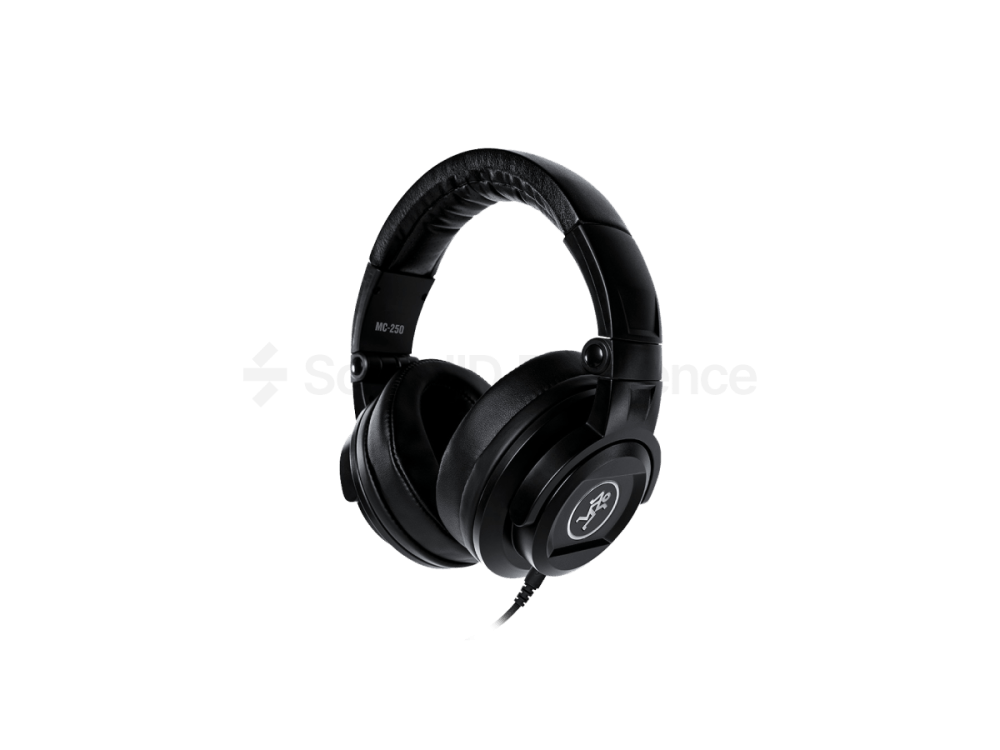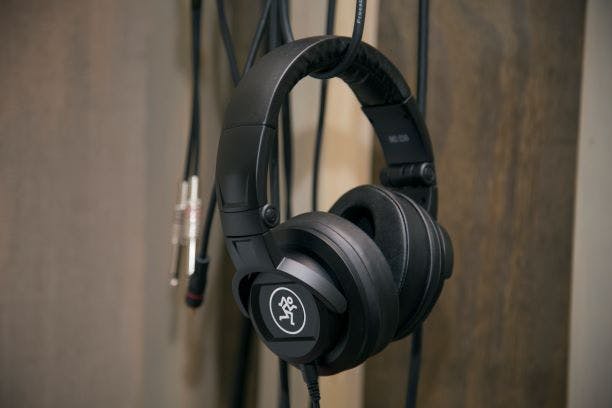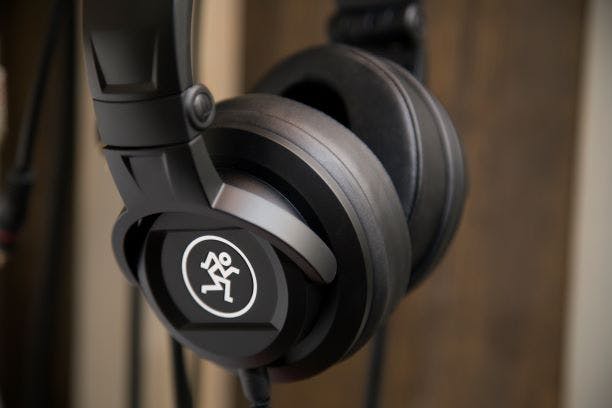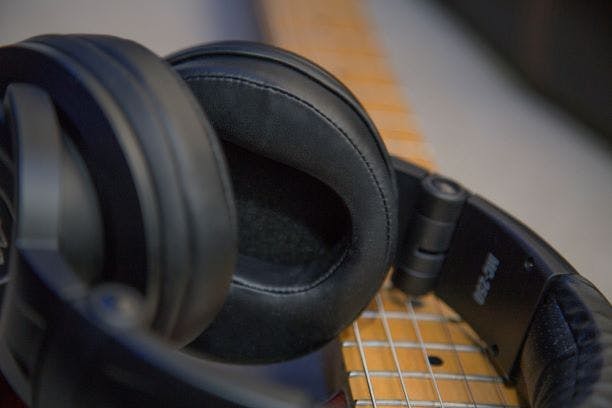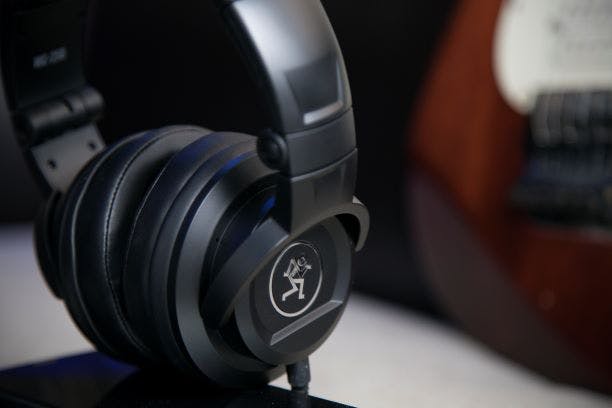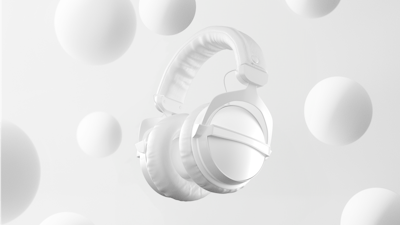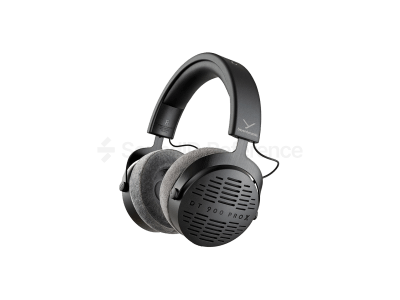Mackie, a household name in studios for decades, has entered the over-ear headphone market with a very capable set of closed backs at a highly competitive price. Let’s find out if they’re any good and how they stack up against the competition.
- Relatively natural sound
- Excellent value for money
Pros list with SoundID Reference calibration
- Accurate subbass
- High frequency boost fixed
- Detailed sound throughout spectrum
- All plastic build might not last forever
- Some pairs have unmatched channels
Not much to say here, any device will provide enough juice to drive them louder than you should be listening to for any period of time.
The all-plastic build is not surprising at this price point and the plastic feels on the cheap side to touch. Mackie makes up for it by making sure that all the contact points do feel nice. The headband doesn’t exert much pressure on the head and ear pads are exceptional – they’re very soft and conform to the shape of the listener’s head nicely. The ear cup hinges squeak and make some cracking sounds when handled which, again, is nothing out of the ordinary for headphones in this price range. The collapsible design and the included carrying pouch suggest that MC-250’s are made with mobility in mind and the overall construction seems sturdy enough to take some beating in the backpack. They perform best where it counts the most – the actual sound and contact points. One unknown variable is how much work hours it takes to deform the earpads to a point that the frequency response is altered significantly enough to void the calibration. They’re really thick though, so I assume this will not happen quickly, but we haven’t tested them for long enough to be sure.
The frequency response is remarkably neutral for a closed-back set. For most of the spectrum, deviations fall within a very respectable +/- 5dB with only frequencies above 5k significantly exceeding that. Out of the box, these are some of the flattest sounding closed-back headphones we’ve ever tested, the fact that you can get a pair for about $100 makes it even more impressive. The natural sound can be largely attributed to the very even frequency response curve in the high-mids, very few headphones manage to reproduce 2-5 kHz range without abrupt spikes and dips. The low-end extension is also impressive – the curve drops below 0 at very low 40 Hz.
So they show many good traits, but they’re not perfect though, the high boost above 7kHz is very prominent and is an obvious giveaway that MC-250 does color the sound and can not be trusted for critical decisions unless you run them through Sonarworks calibration. To their defense, I may add that the hyped highs are a painfully common trend among every other model one could compare these Mackies against, so this is no unique drawback by any means.
The channel inconsistency is the greatest weakness, two of the pairs we measured show an imbalance of up to 5 dB at 300 Hz and below which is enough of an issue to play with your head when doing critical mixing work. The average calibration profile for this model in Reference won’t help you with this either, as the average profiles are mono, but on the other hand, individual calibration profiles do sort out channel balance. While it may sound weird to buy a $150 service for headphones that cost less than that, it may be a good idea, as you do get a very capable set of closed backs, fit for any task you can throw at them. With all this being said, the low end imbalance wasn’t present in all of the measured pairs and the rest of the spectrum balance consistency, while being far from perfect, most likely wouldn’t impact your mix decisions in a significant way.
These headphones can be worn for long sessions with quite low fatigue when compared to their rivals apart from the pricier Beyerdynamic DT 770 Pro which is a clear winner when it comes to comfort. While the design of the headphones can be considered over-ear, the squishy ear pads do compress pinna a bit, so after a few hours of usage, your ears might start to notice some discomfort. The headband is barely noticeable, most likely your ears will get hot long before the headband pressure becomes an issue. The all-plastic construction that might raise some concerns of the longevity, does ensure low weight which helps to wear them for longer with no worries.
Value is superb! MC-250’s deliver as natural sound as you can get in a closed-back headphone (only the discontinued Oppo PM-3 scores significantly higher here, but they’re way more expensive) at a very affordable price of about $100. The potential channel imbalance is a concern though and one of the very few reasons why one might consider looking for a pricier alternative.

Very high marks here! MC-250’s are up there with the best of closed-backs when it comes to delivering accurate sound to any listener.
How much do they differ pair to pair in terms of frequency response?The mids are nice and even among the measured pairs, but below 400 Hz you can expect about +/- 3 dB differences and more than that when going over 10 kHz. It’s a fair result when compared to similar models.
Rating
Conclusion
Truly impressive debut in the over-ear headphone arena from Mackie! Neutral-ish sound out of the box? Check. Fantastic sound after calibration? Check. Low THD? Check. Consistent sound among different listeners? Check! Perfectly balanced channels? Well, sadly no. Maybe we were unlucky with our pairs but considering their price point, it wouldn’t be a surprise if it turns out to be a common issue. Nevertheless, the channel balance can be fixed via individual calibration, which enables you to get a highly accurate and dependable monitoring tool for about $250 which is an immense value for money. The non-existent replacement ear pad availability (Mackie support says that they will be in the future) and the channel imbalance are the only issues for an otherwise highly impressive set of headphones.
Final Rating
Calibration Enabled
Calibration
